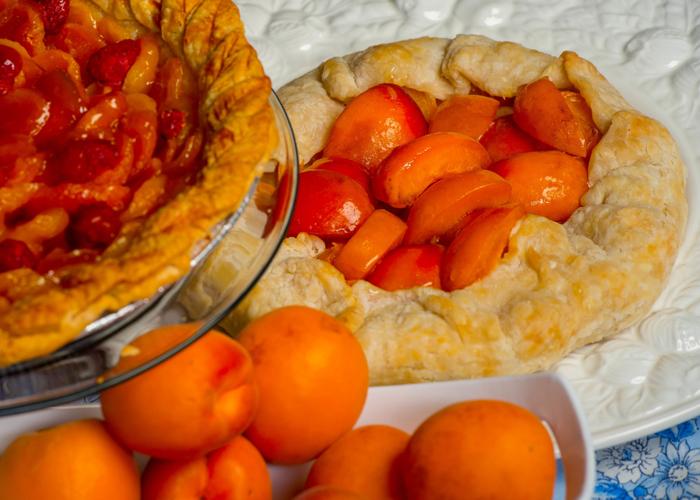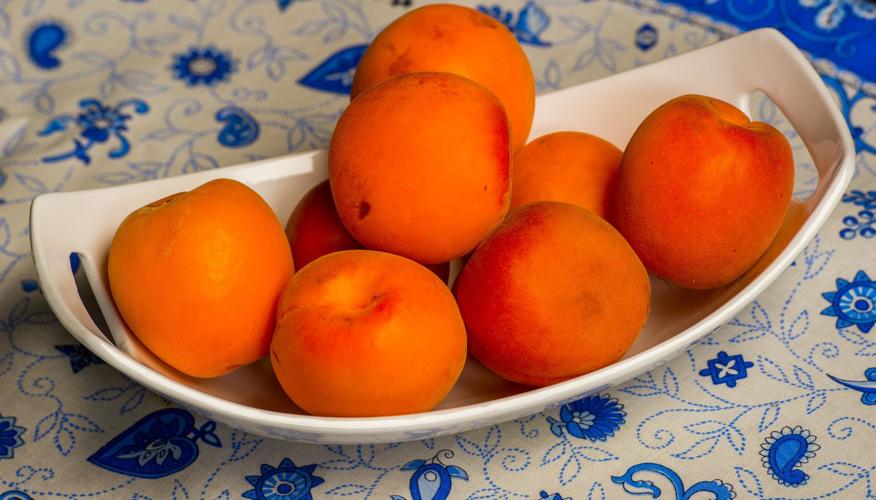Ah apricots - golden velvety orbs bursting with luscious flavor. There are so many ways to use them: sliced on hot or cold cereal; chopped and folded into whole grain pancakes or breads; mixed into savory stews; or served fresh in a green salad. You can munch on them whole or snack on bags of dried fruit.
Briana Rockler, extension agent for El Paso Colorado State University Extension, has apricots on her list of foods to preserve.
"Since they are high acid, apricots are easy to preserve in a water bath, as preserves, dehydrated or frozen," said Rockler, who teaches food-preservation classes. "They are super versatile."
Habañero Gold jelly is one of her favorite things to make and use for holiday gifts.
"This is my absolute favorite jelly recipe," she said. "It is made by using dried, sliced apricots soaked in vinegar and then 'jellied' with habañero and jalapeño peppers, red onion and red bell pepper. Then water bath canned to make a gorgeous golden pepper jelly. It makes a great gift."
Another reason to love them is for their eye health benefits.
"Apricots both fresh and dried have many nutrients that support eye health - vitamins A, C, E, mineral zinc, lutein and zeaxanthin," said Sandra Young, a Monument-based optometrist with a special interest in nutrition and vision. She is the author of "The Visionary Kitchen" and is just putting the finishing touches on "Heal Your Dry Eyes: Nutrition & Recipes."
Lutein and zeaxanthin are nutrients that, when transported to our eyes, protect the lens and retina from sun damage.
"Much like an internal sunscreen filtering out harmful rays," Young said. "In order to read, see faces and details, a specialized part of the retina is used, known as the macula lutea. In Latin, this means yellow spot. The yellow spot is yellow from the foods we eat that contain lutein and zeaxanthin. "These nutrients are known as the macular pigments and form an optical layer to help to protect the macula against age-related macular degeneration. Besides protecting the macula, this optical layer of macular pigments has been shown to improve visual processing speed important for athletes. Other benefits include less trouble with glare and improved contrast sensitivity."
With apricot season nearing an end, it's a good time to shop for them to make preserves, freeze or dehydrate. The fabulous flavors of apricots become even more intense with dehydration. "Dried apricots are excellent snacks in the winter," said Glen Austin, owner of Austin Family Farm in Paonia, which grows the delicious fruit and sells it at the Colorado Farm and Art Market at The Margarita at PineCreek on Saturday mornings.
Dehydrating them yourself is much safer than buying them that way. Commercially dried apricots might have been treated with sulfur-containing compounds during processing to extend shelf life and preserve the bright orange color.
You can still find apricots at farmers markets. Austin said spring frosts and later hail damage led the farm to sell two varieties: the slightly damaged "No. 2 variety" (for $1 a pound) and the undamaged "No. 1 variety" for $2 a pound.
Whether you get them at the market or the grocery store, look for fruits with a rich orange color. Avoid those that are pale and yellow. They should be slightly soft. If they are too firm, they have not been tree-ripened, and tree-ripened fruits always taste best. For the most antioxidants, choose fully ripened fruit.


























 Your Privacy Choices
Your Privacy Choices